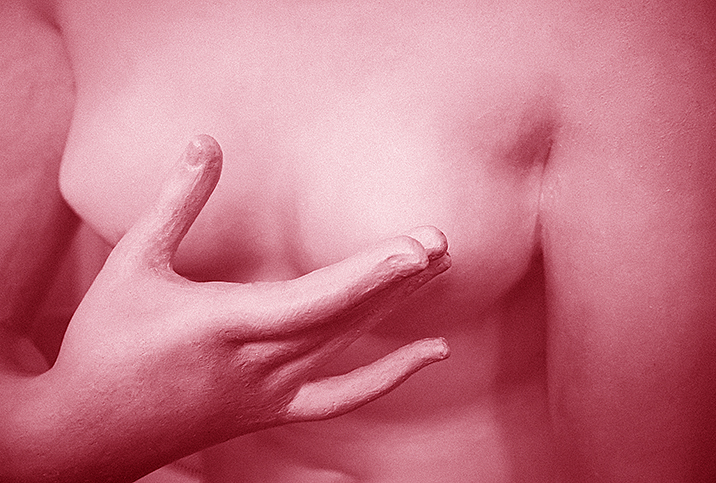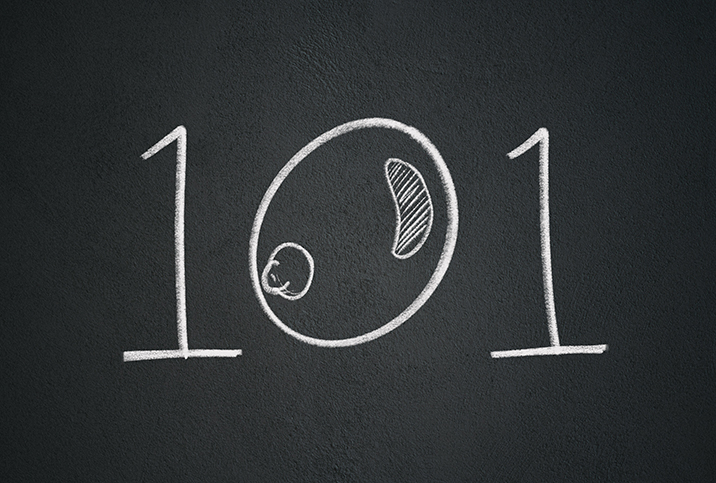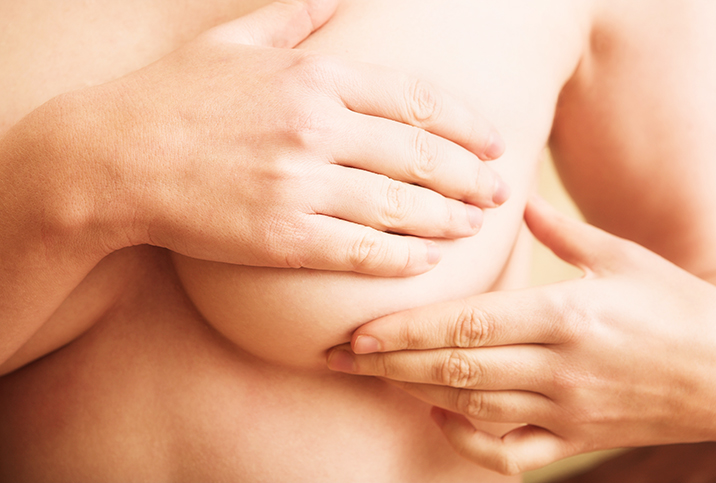Correctly Perform Your Breast Self-Exam

One in eight women in the United States will be diagnosed with invasive breast cancer in her lifetime. It’s a sobering statistic.
That is the highest diagnostic rate for women for any cancer, with the exception of skin cancer, and the second-highest death rate—1.3 percent per year—of any cancer in women. The greatest weapon against this deadly disease is early detection and treatment, beginning with the breast self-exam.
Breast cancer risks
The two greatest risk factors for breast cancer are being female and growing older, according to the Centers for Disease Control and Prevention (CDC). The risk of breast cancer doubles for a woman if she has a first-degree relative—mother, sister or daughter—who has been diagnosed with the disease.
However, 85 percent of breast cancer diagnoses are for women with no family history of the disease at all. So while it’s critical to research your family background to fully determine the risk, women without this family link should be equally vigilant.
How to examine your breast
The breast self-exam is a detection method using your hands and eyes to look for any obvious lumps or masses, or any general changes to the look and feel of your breasts. The self-exam, if regular BSEs make you feel more empowered as part of your own healthcare program, should be carried out on a monthly basis. (Many health experts and organizations are dropping breast self-exams from their protocols, and even more are emphasizing that self-exams are an adjunct to, not a substitute for, mammography.)
Mammograms and annual manual exams by your gynecologist are critical and more reliable, but a significant proportion—as high as 40 percent, according to Johns Hopkins Medicine—of women diagnosed with breast cancer identified the first signs themselves.
The most easily accessible tool you have to protect yourself from breast cancer is the same one you use for countless daily tasks: your hands. The more frequently you examine your breasts, the more familiar you will be with your own “normal,” and the more likely you will be to notice a change. If you have a partner, sharing in the exam can be an intimate way to bond. But be sure to keep serious breast examination and sexy foreplay separate.
Self-exam instructions
A self-exam. Sounds simple, right? Yes, but it needs to be done correctly to provide maximum benefit.
Preparation. Ask your doctor for a demonstration or watch tutorial videos from an accredited institution to understand the correct way to perform an exam. It might be best to choose a time when your breasts aren’t unusually sensitive. For example, some women experience breast tenderness linked to menstruation, so you may not want to self-examine while on your period. In fact, the best time to examine your breasts is right after your period, when breasts are less sensitive.
Start with visuals. Bare-breasted, sit on a chair or stand in front of a mirror with your arms comfortably at your sides. Visually inspect your breasts for changes in size, symmetry or puckering. Inspect the nipples and note any inversion (inward pointing). Repeat the visual inspection with your hands pressed down on your hips, and then with your arms overhead, palms pressed together. Look for symmetrical ridges underneath your breasts.
Move to physical. This aspect of the exam can be completed in front of the mirror, lying down on a bed or even standing in the shower. Lying down spreads out the breast tissue and therefore may be the most effective position. But many women find that examining their breasts in the shower is easy to do because the pads of their fingers glide more easily over wet skin. Use the pads of your three middle fingers to gently press and feel the entirety of both breasts and armpit areas. Use light pressure, then medium, then firm to examine multiple depths. Many women find it helpful to follow a pattern, such as examining in a section like a pie slice, moving outward from the nipple, and then moving clockwise to the next pie slice, to ensure they don’t miss any spots. This process may take several minutes.
When to call your doctor
Breast size, shape and feel can vary depending on weight, hormones and other factors, meaning that many differences noted will not be linked to cancer.
If you think you notice something different or feel a lump, don’t panic. Do call your doctor to discuss any potential issues, and make an appointment immediately if you notice hard lumps, puckering, an inverted nipple, redness or warmth, bloody nipple discharge or red, scaling skin.
Breast cancer can be a deadly disease, but treatments are highly effective if you detect the symptoms early. Protecting yourself with a monthly breast self-exam and, even more importantly, maintaining your annual mammography schedule is the best strategy to combat breast cancer. One trick to remember to do monthly self-exams is to always do it on the same day of the month, such as the first of each month or the number of your birthdate.


















